I am going through one video on BGP with IBGP neighbors having multiple paths between them. The author says that ordinarily we will need so many IBGP session between the routers as shown below
Then he says that the solution is to form neighbor ship over loopbacks as shown below. My question is, in this case also, full IBGP neighbor ship will still be required, otherwise how will R2 and R2 (the physical paths) will know about the routes in the ASs connected to R1 and R4 and hence the packets will be dropped. Please let me know if I am correct, if not what's the correct concept.

